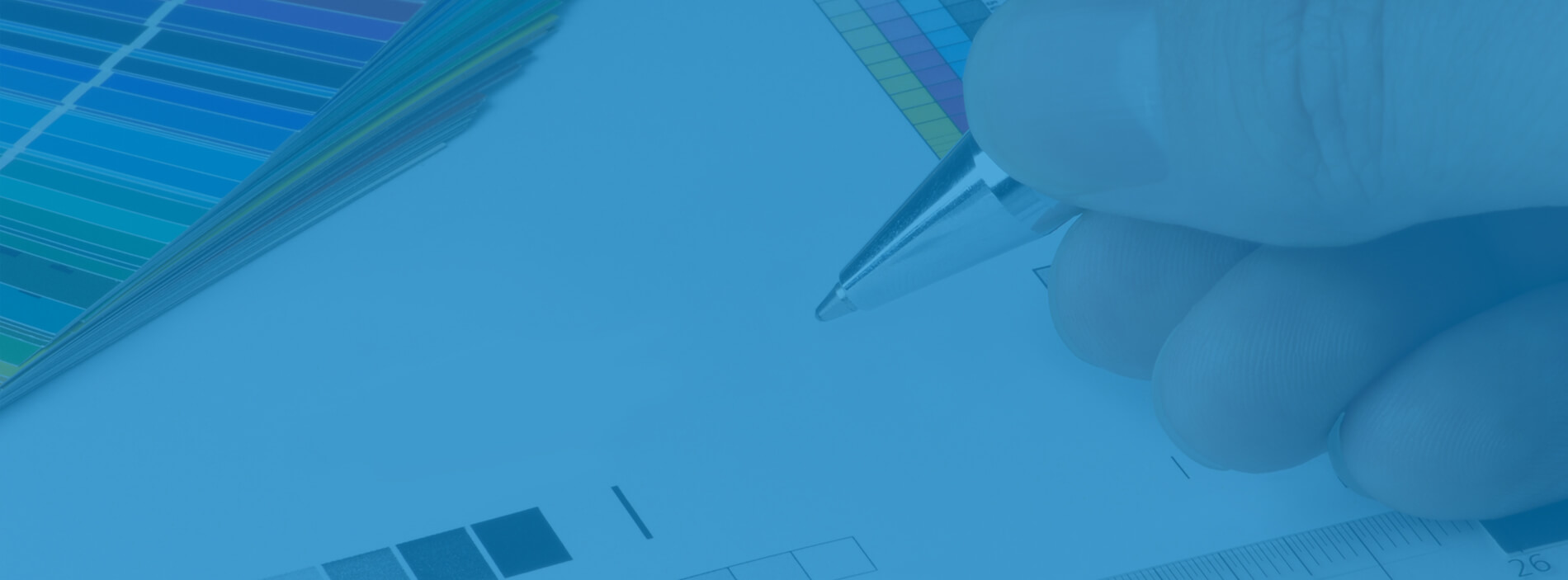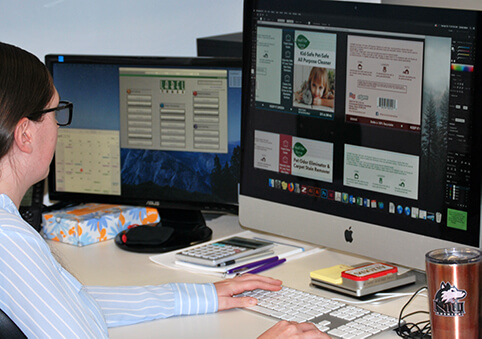
Artwork Guidelines & Label Planning
When it comes to producing your project, we make sure artwork looks the best it can for you and your end user/consumer. The Label Printers’ Art Department takes that responsibility seriously. We invest in technology translates a concept through the required steps to produce a finished product.
Our team includes expert users of Adobe Creative Cloud as well as specialty systems from Esko and Hybrid. A completely in-house platemaking and pre-press process allows tight control over all steps of the process. Press operators have direct access to the pre-press team in case of any questions. Pre-press, pressroom and quality assurance stay in continuous communication as each job moves through the processes. This type of collaboration ensures that we will present and protect your image.
If you have in-house designers or a design agency, the pre-press team is ready to work with them and can include them in our process. Through the years, we have partnered with talented designers, so we may be able to make an introduction for you, if that is how you prefer to work.
If you plan to develop and share designs with us, here are some basics to keep in mind.

Design Basics
Software you should use:
- Adobe Illustrator
- Adobe Photoshop
- Adobe InDesign
Software you should not use:
- Microsoft Word
- Excel
- PowerPoint
- Publisher and similar business software
File formats we can accept:
- AI, PSD, TIFF
- JPG*, INDD, QXD, PDF
*JPGs should be compressed as little as possible as it will affect quality. Please note that resaving a jpg as a tiff/eps does not improve quality.
Tips for best quality:
- Provide all of the supporting files (fonts, images, and logos, etc.).
- If fonts cannot be provided, present all text as outlines.
- Images should be at least 300 dpi. Higher is better.
- Supply artwork to exact dimensions ordered.
- Supply proper 1/16″ bleeds when applicable.
Printing 101
Learn more about some of the terms and technology we use at The Label Printers. Simply click on each section for more information.
There are two major types of 2D graphics – vector and bitmap. Bitmap images are made up of pixels which are tiny dots of individual color. An example of this would be a photograph. Bitmap images are RESOLUTION DEPENDENT. They should always be submitted at a resolution of 300 dpi or ppi (dots per inch or pixels per inch). They should also be submitted at the size being used whenever possible. Common bitmap formats include: jpg, jpeg, bmp, gif, png, tiff.
Vector images are made up of many individual, scalable objects. These objects are defined by mathematical equations rather than pixels, so they always render at the highest quality. Objects may consist of lines, curves, and shapes with editable attributes such as color, fill, and outline. Because they are scalable, they are RESOLUTION INDEPENDENT. Some common uses of vector art are text and logos. Common vector formats include: ai (Adobe Illustrator) and eps.
A PDF file can contain both types of graphics.
